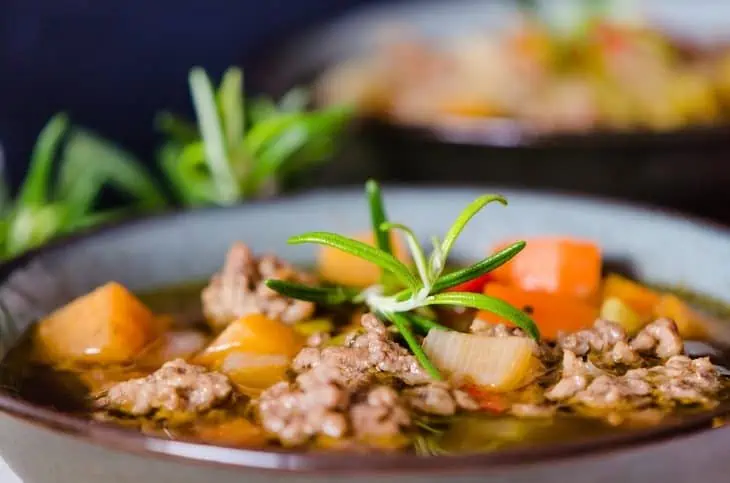Going gluten-free is a great idea, but there are quite a few things that you need to keep in mind if you live an active lifestyle. Eating a few nuts and berries or having some homemade trail mix isn’t going to cut it. Instead, keep everything in this beginner’s guide to a gluten-free diet for active men to ensure that they are healthy and have the energy to keep up with their active lifestyle.
Plan Ahead
When going gluten-free, it’s easy to feel lethargic in the beginning. Switching to a gluten-free diet can involve cutting out more carbs, and you may go through a withdrawal period. Make sure that you prepare for this before making the lifestyle change.
You can do this by slowing down for 2-3 weeks after switching or until you get your energy back. Researching gluten-free foods to ensure that you still get plenty of carbs is another excellent idea.
Benefits Of A Gluten-Free Diet
Going gluten-free can help you feel better while improving your athletic performance. People with Celiac Disease have to be on a gluten-free diet, but many athletes choose a gluten-free diet for the many benefits that it gives them. Some of the benefits of going gluten-free include:
- Increased concentration
- Improved stamina
- More energy
- Less brain fog
- Weight loss
- Fewer headaches
- Less bloating
- Improved digestion
- Improved skin conditions
If you have conditions that impact your digestive system, such as IBS, going gluten-free can help you feel better. The other benefits work together to improve your performance in everything that you do.
Everyday Foods That Have Gluten
Going gluten-free requires cutting out every food that has gluten in it. Gluten is found in wheat, rye, barley, and triticale. Most malt and brewer’s yeast also have gluten. This can be a challenge initially because quite a few foods have gluten.
Bread is the main category that you’ll need to avoid. Most bread products are made with white flour, which has wheat. That includes, but is not limited to:
- Bread
- Breadsticks
- Pies
- Pre-made doughs, such as pie crust, rolls, biscuits
You’ll also need to avoid all pasta unless it is gluten-free. They do make pasta with rice and almond flour. Veggie pasta tastes good and is a great way to incorporate more vitamins and nutrients into your diet.
Most fast food has gluten in it. French fries are often fried in oil that contains a small amount of wheat. Hamburgers and sandwiches with buns are off limits, as are foods with any type of breading, such as breaded chicken sandwiches or chicken nuggets.
Frozen food is another thing to watch out for. Wheat is often used in frozen foods as a preservative.
Processed foods often contain gluten for the same reason. Even canned foods occasionally have gluten in them.
These are the main places where you’ll find gluten, but it’s not a comprehensive list. You’ll also find gluten in sauces, lunchmeats, side dishes, etc. Make sure to read food labels carefully.
Hidden Gluten
Some products have what we call hidden gluten. Whereas many foods list wheat as a common allergen at the bottom of the ingredient list, others do not. For example, rice sides made with brown rice might be with a type of wheat flour. In this situation, it’s listed further on the ingredient list or may not be listed. Researching foods to make sure you’re not eating gluten is important.
Learn About Nutrition
Learning about nutrition is essential for a gluten-free diet. Eliminating a lot of food from your diet increases your risk for vitamin deficiencies, such as Vitamin B and Vitamin K.
Understand The Risks
Understanding nutrition’s role in your body and your life is essential. When you don’t receive the vitamins and nutrients your body needs, your organs cannot function properly. Eventually, this will lead to health complications. Knowing how important it is to stay healthy can help motivate you always to keep your health in mind.
Get Plenty Of Carbs
The main foods that you’ll eliminate on this diet are carbs. However, your body needs carbs. Instead of gluten-containing foods with carbs, get yours from fruits, starchy vegetables, gluten-free pasta, and gluten-free bread to ensure an appropriate carb intake. Finding a recipe for allergy free bread will guarantee that you always have plenty of carbs in your diet.
Protein Is Important
If you previously got most of your protein from protein bars, you may have to find a new source of protein. Eggs are a great idea. Gluten-free protein powders are also readily available! Remember that most protein powders, shakes, and bars have gluten.
Don’t Overdo It
After going through a mild withdrawal phase, you’ll feel an increase in energy and stamina, unlike anything else. It’s easy to get carried away and want to train harder and faster than ever. However, this is easy to wind up with pulled muscles and other injuries. Instead, remember that progress is a process, and take it slow.
Going gluten-free is going to up your athletic game more than you could imagine. It can be challenging, but this beginner’s guide will help you feel amazing and stick to your gluten-free diet.

